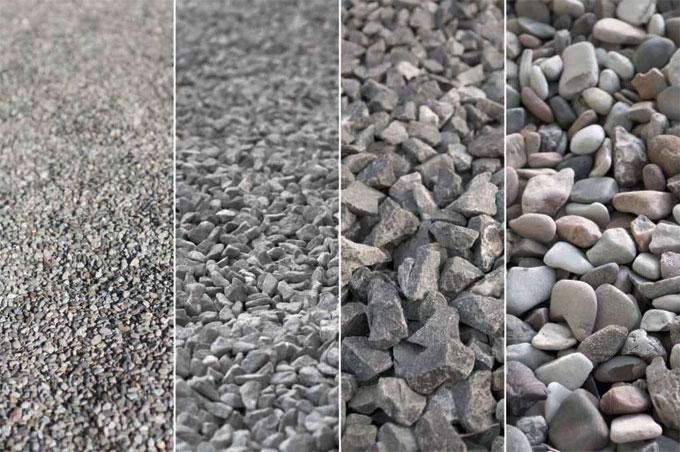
European Standards for Aggregates: Physical
The aggregates utilized in the creation of concrete are inactive granular materials, for example, gravel, squashed stone, sand, slag, reused concrete, and geosynthetic aggregates. The aggregates might be normal, produced, or reused.
In this article, we talk about the physical necessity of the aggregates, for example, protection from fracture, wear, cleaning, scraped spot, molecule thickness, mass thickness, and toughness utilized in the creation of concrete according to the European Standards (EN ? 12620).
1. Protection from Fragmentation of Coarse Aggregate: The protection from discontinuity will be resolved with the Los Angeles test strategy as a kind of perspective as far as the Los Angeles coefficient, as indicated in EN 1097-2:1998, condition 5.
Where required, the effect esteem decided as per EN 1097-2:1998, statement 6, will be announced as per the pertinent class indicated in the book as indicated by the specific application or end-use.
2. Protection from Wear of Coarse Aggregate: The protection from wear of coarse aggregate will be resolved as per EN 1097-1. The small scale deval coefficient will be pronounced as per the pertinent classifications indicated in the code, as per the specific application or end-use.
3. Protection from Polishing: The protection from cleaning of coarse aggregate to be utilized for surface courses (cleaned stone worth PSV) will be resolved as per EN 1097-8. The protection from cleaning will be proclaimed as per the significant class indicated.
4. Protection from Surface Abrasion: The protection from surface scraped spot (aggregate scraped spot esteem ? AAV), will be resolved as per EN 1097-8:1999, attach A. The protection from surface scraped spot will be pronounced as per the important class.
5. Protection from Abrasion from Studded Tires: The protection from scraped spot from studded tires (Nordic scraped spot esteem A), will be resolved as per EN 1097-9. Protection from scraped area from studded tires will be proclaimed as per the important class determined in the code.
6. Molecule Density and Water Absorption: The molecule thickness and water assimilation will be resolved as per EN 1097-6, and the outcomes proclaimed on demand expressing the methods for assurance and the estimations utilized.
7. Mass Density: At the point when required, the mass thickness will be resolved as per EN 1097-3, and the outcomes proclaimed on demand.
8. Strength
8.1 Freeze and Thaw Resistance of Coarse Aggregate: The aggregates utilized in the earth exposed to freezing and defrosting will be tried as per EN 1367-1 or EN 1367-2, separately, as per the applicable class determined in the books.
8.2 Volume Stability - Drying Shrinkage: On the off chance that where problematic shrinkage breaking of concrete happens because of the properties of the aggregate, the drying shrinkage related with aggregates to be utilized in auxiliary concrete will, when required, not surpass 0,075 % when tried as per EN 1367-4 and the outcomes announced.
8.3 Alkali-Silica Reactivity: At the point when required, the salt silica reactivity of aggregates will be surveyed as per the arrangements legitimate in the spot of utilization, and the outcomes announced.
Important Questions
1. What is the significance of aggregates in concrete?
The properties of concrete, for example, usefulness, solidness, quality, weight, and, shrinkage are represented by the properties (synthesis, shape, and size) of aggregate utilized in the concrete.
2. Which size of coarse aggregate is normally utilized in the creation of concrete?
Normally, aggregate passing the sifter of 20mm and holding the strainer of 12.5mm is favored for the creation of concrete.


